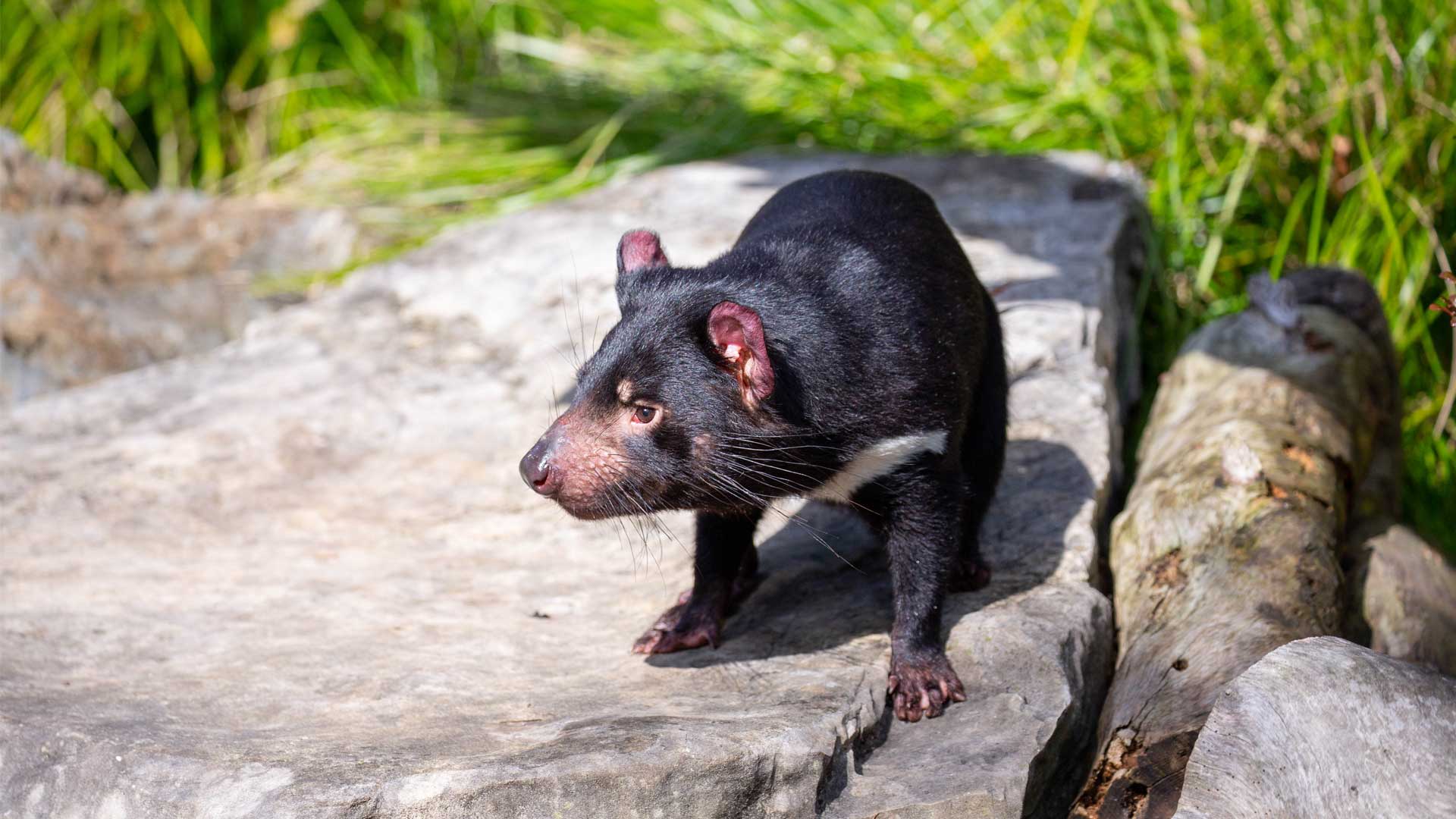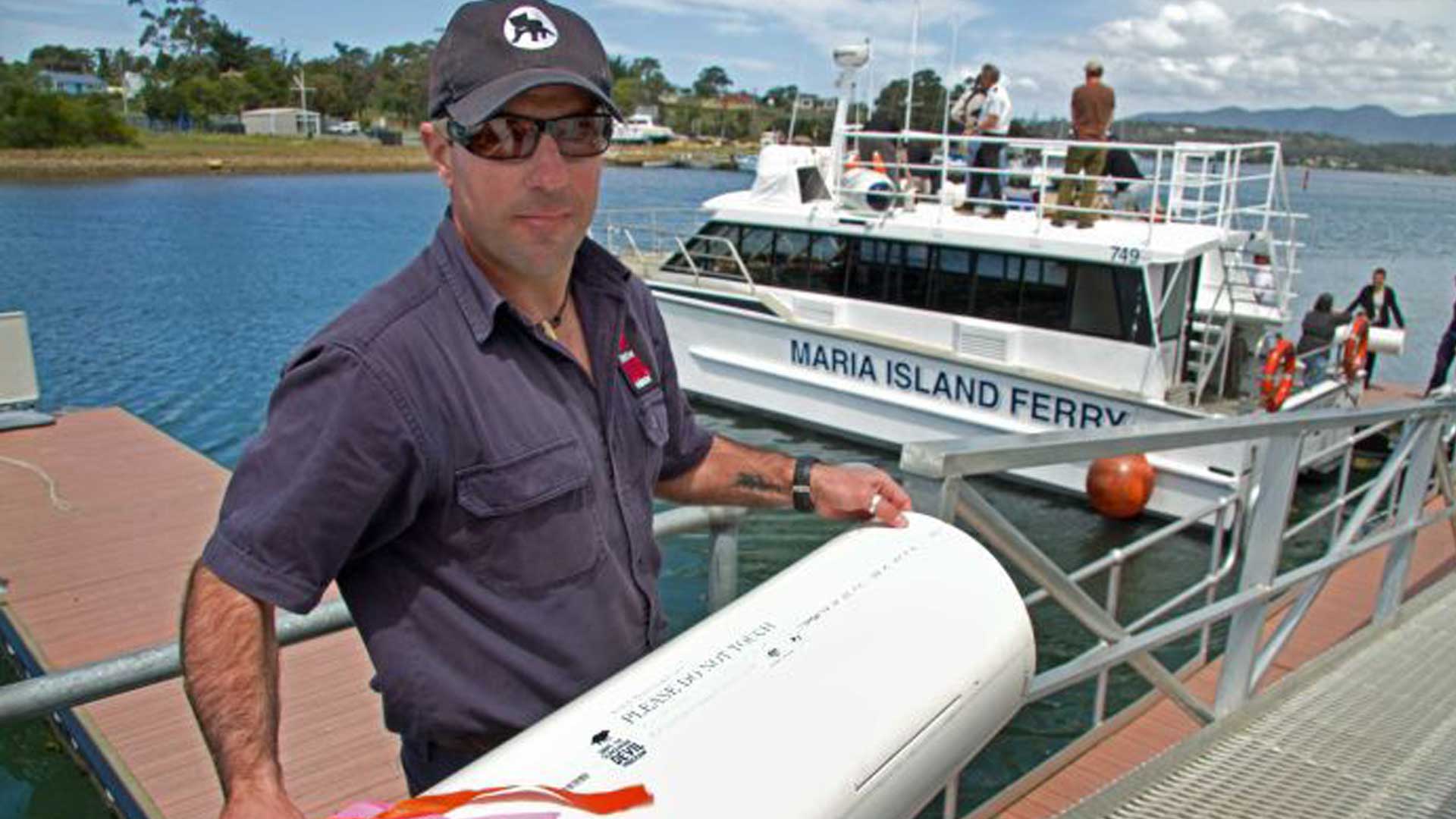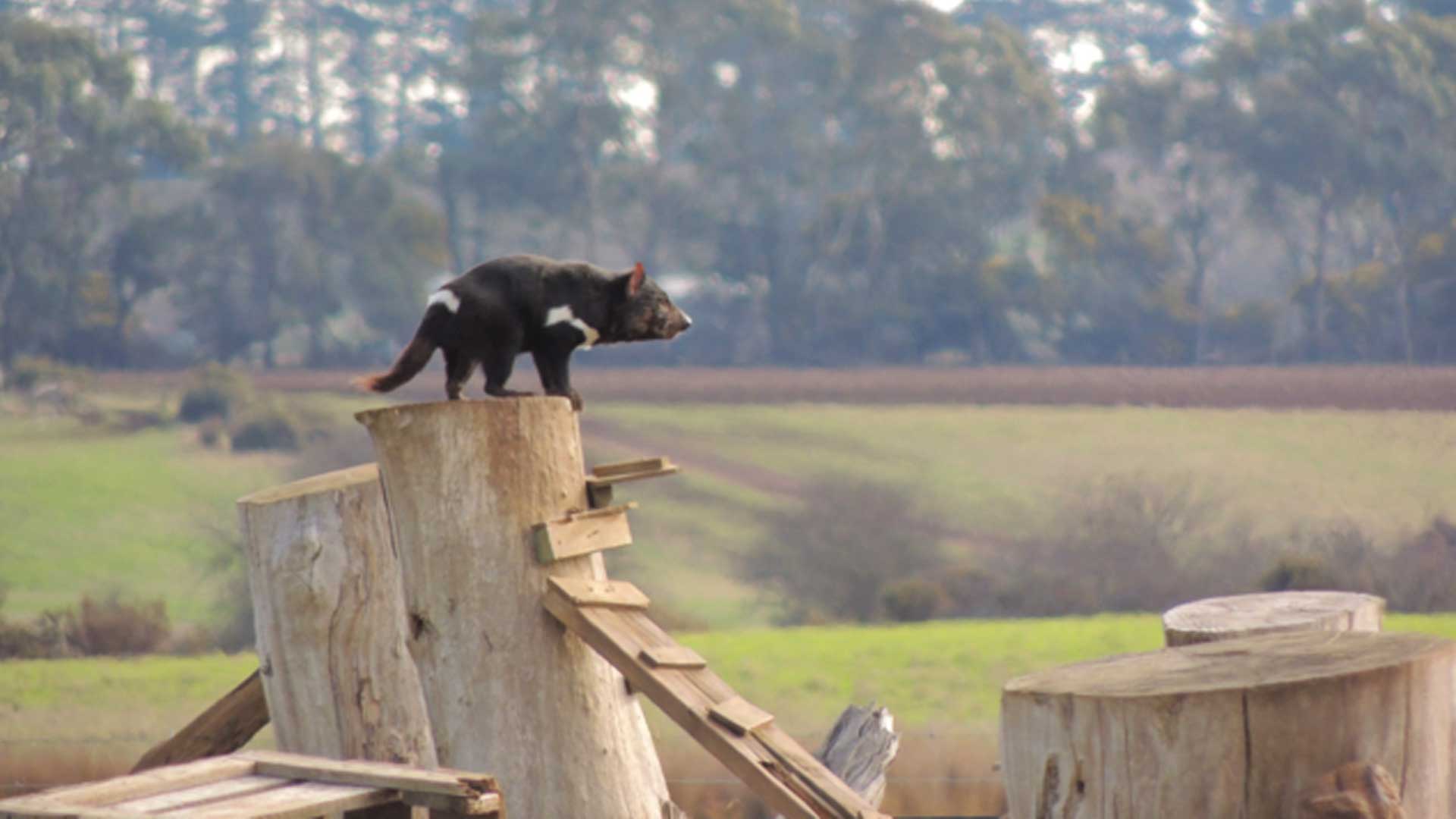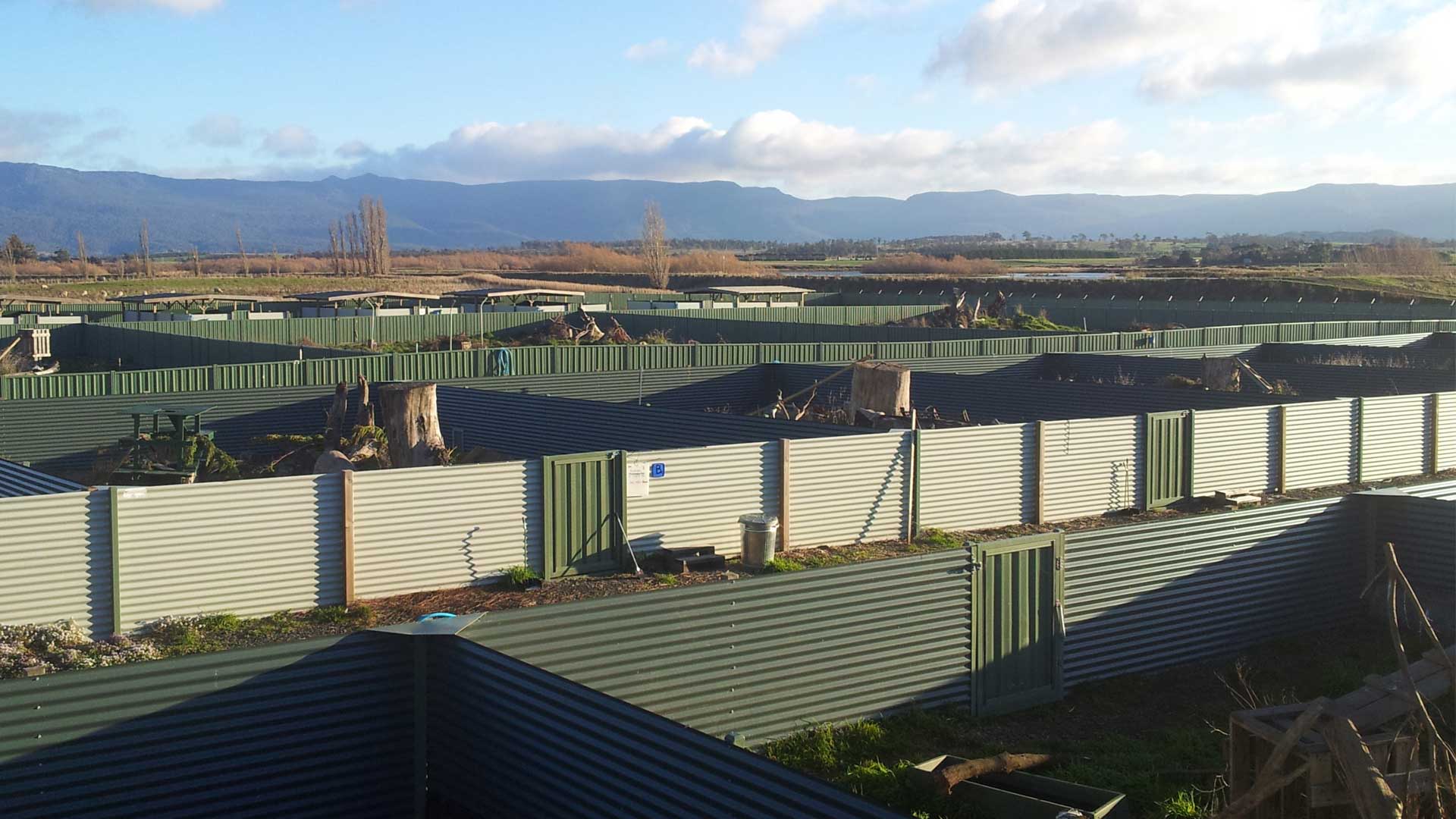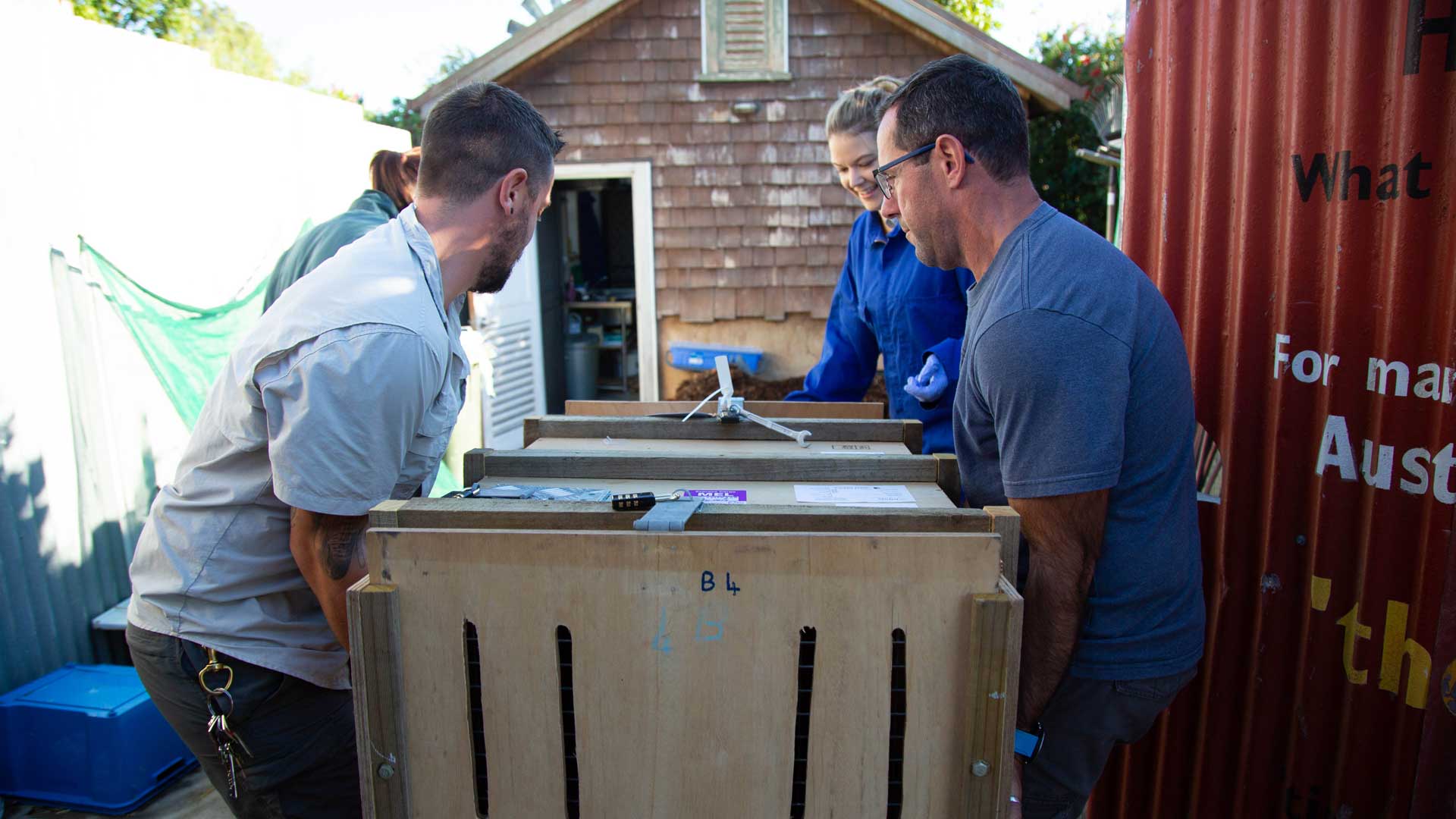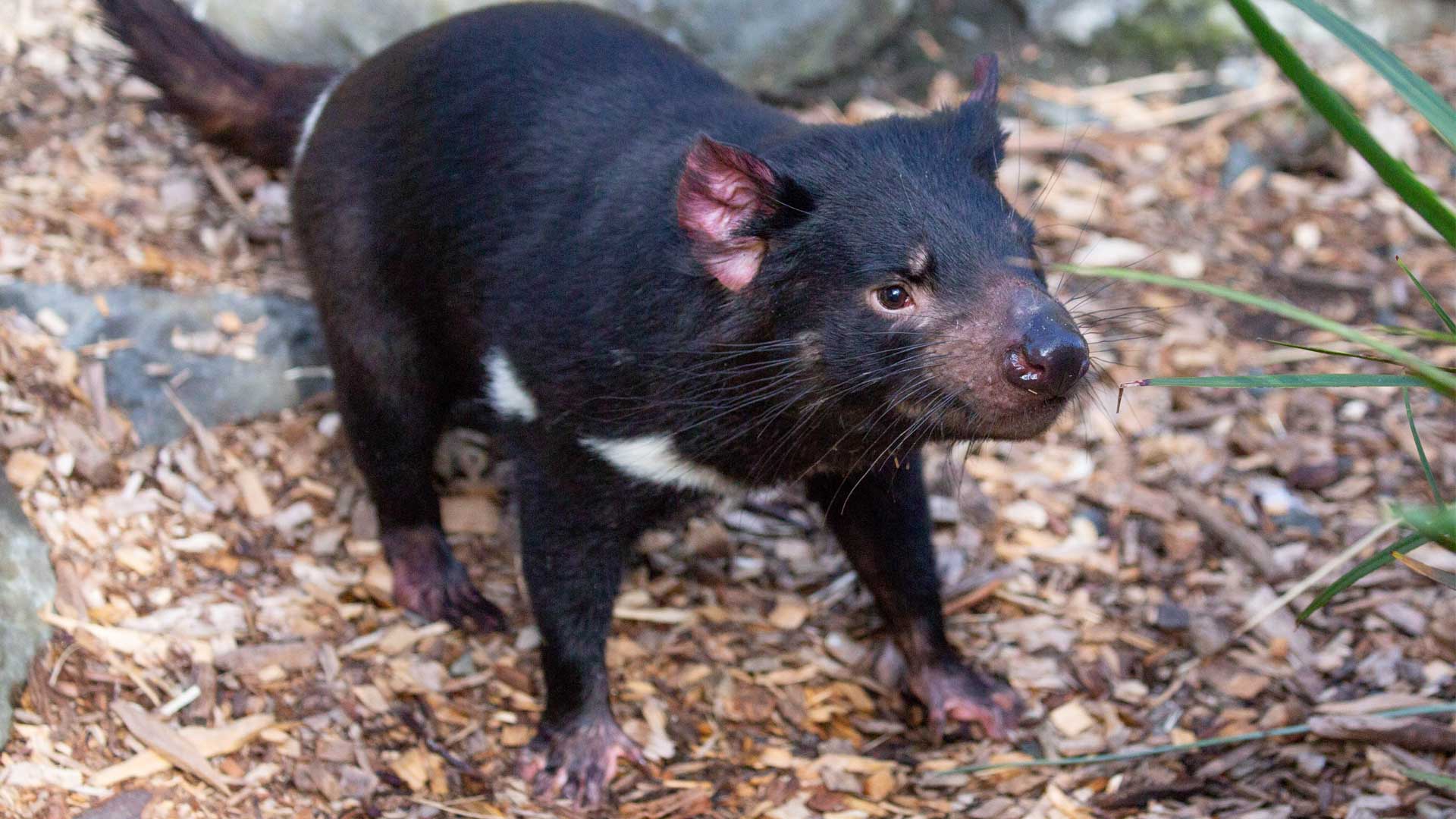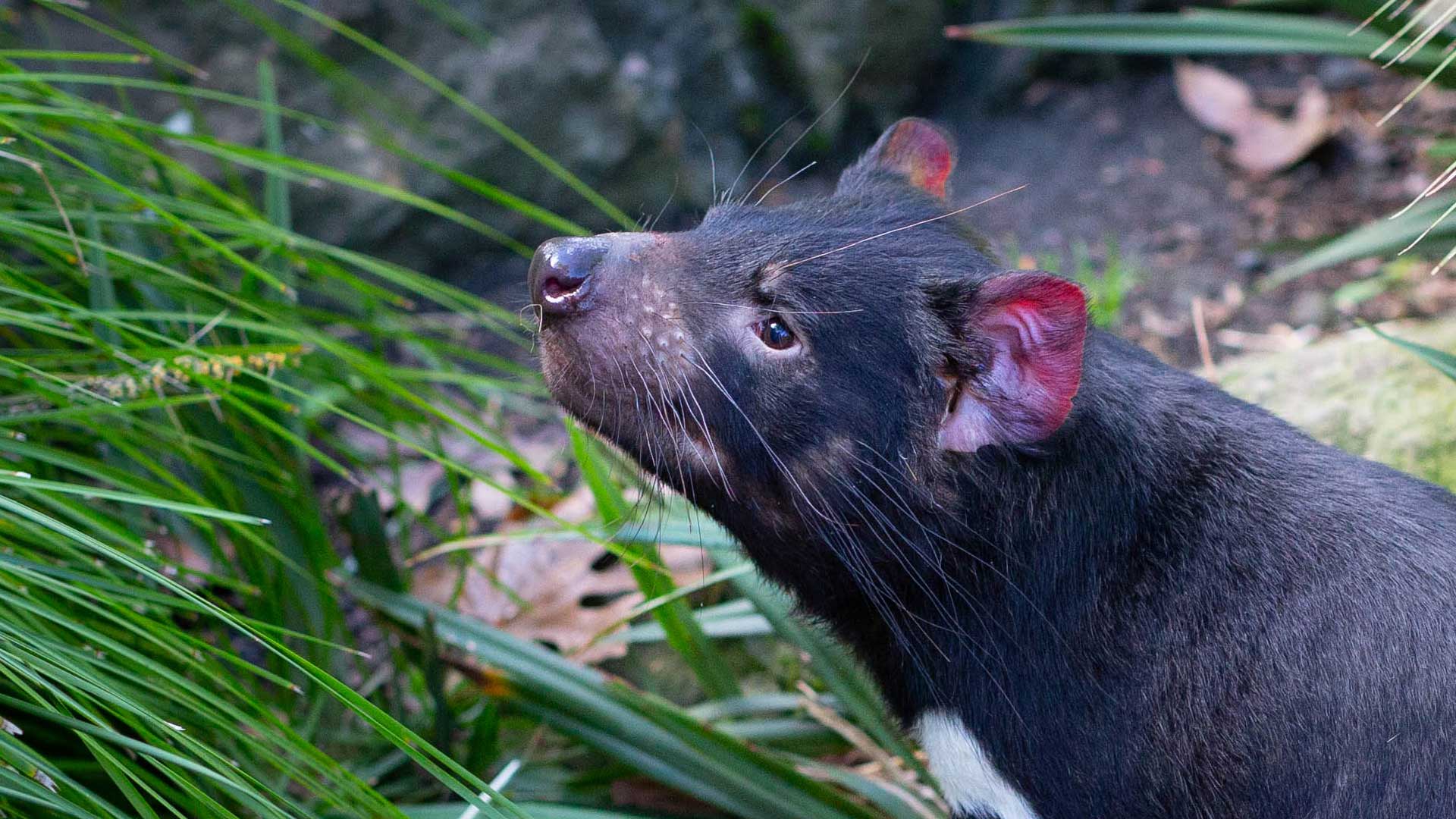In response to the contagious disease and declining number of devils, the Tasmanian Government initiated the Save the Tasmanian Devil Program in 2003. The objective is to maintain an enduring and ecologically functional population of Tasmanian devils in the wild. Devils perform an important functional role in the wild, doing things such as ‘cleaning up’ the wild, by getting rid of road kill and carcasses.
Working with Tasmanian Devils in Tasmania was a “no-brainer” for David when an opportunity came up in the ‘Save the Tasmanian Devil Program’. The strategy involves: a captive breeding programme to create an insurance population and expand genetic diversity; maintaining a sustainable population of devils on Maria Island and Forestier Peninsula, and bringing new devils in to these areas for genetic diversity; annual monitoring to ensure wild populations are persisting; and advocacy, which means to inform, educate, involve and collaborate with zoos, research institutions and funding bodies.
David is now playing an ambassador role for the species, working with zoos and like-minded organisations. The ability to transfer healthy devils from the insurance population to mainland Australia and zoos around the world, not only safeguards the species, but also contributes to public education - allowing people to maybe see one for the first time, learn about the disease, make a connection and empathise with devils. By supporting this programme, Auckland Zoo and other zoos alike have contributed vital pieces of equipment to help it run more effectively. Auckland Zoo contributed GPS collars so that once devils are released back into the wild they can be tracked and monitored, which is vital for a breed and release programme.
You may recall Auckland Zoo got two new Tasmanian devils earlier this year, but did you know they are two of the insurance population that came from a captive management facility in Tasmania, as part of the ‘Save the Tasmanian Devil Program’? Levi, and the ironically named Smiley have settled in and are becoming more confident by the day. As they have gained trust in their new home and keepers, their personalities have begun to shine through. Levi is the more dominant and vocal devil, whereas Smiley likes his alone time and the keepers have found him digging down and making a small bed for himself amongst the tall grasses. Next time you visit Auckland Zoo you can try and tell them apart – Levi has big white marks on his back, whereas Smiley has none.
If you happen to fall in love with these sweet creatures, you can help save the species too! Just by visiting Levi and Smiley, and our old boy Herod, a portion of your entry fee is contributing to the Auckland Zoo Conservation Fund, which supports important projects like this.



